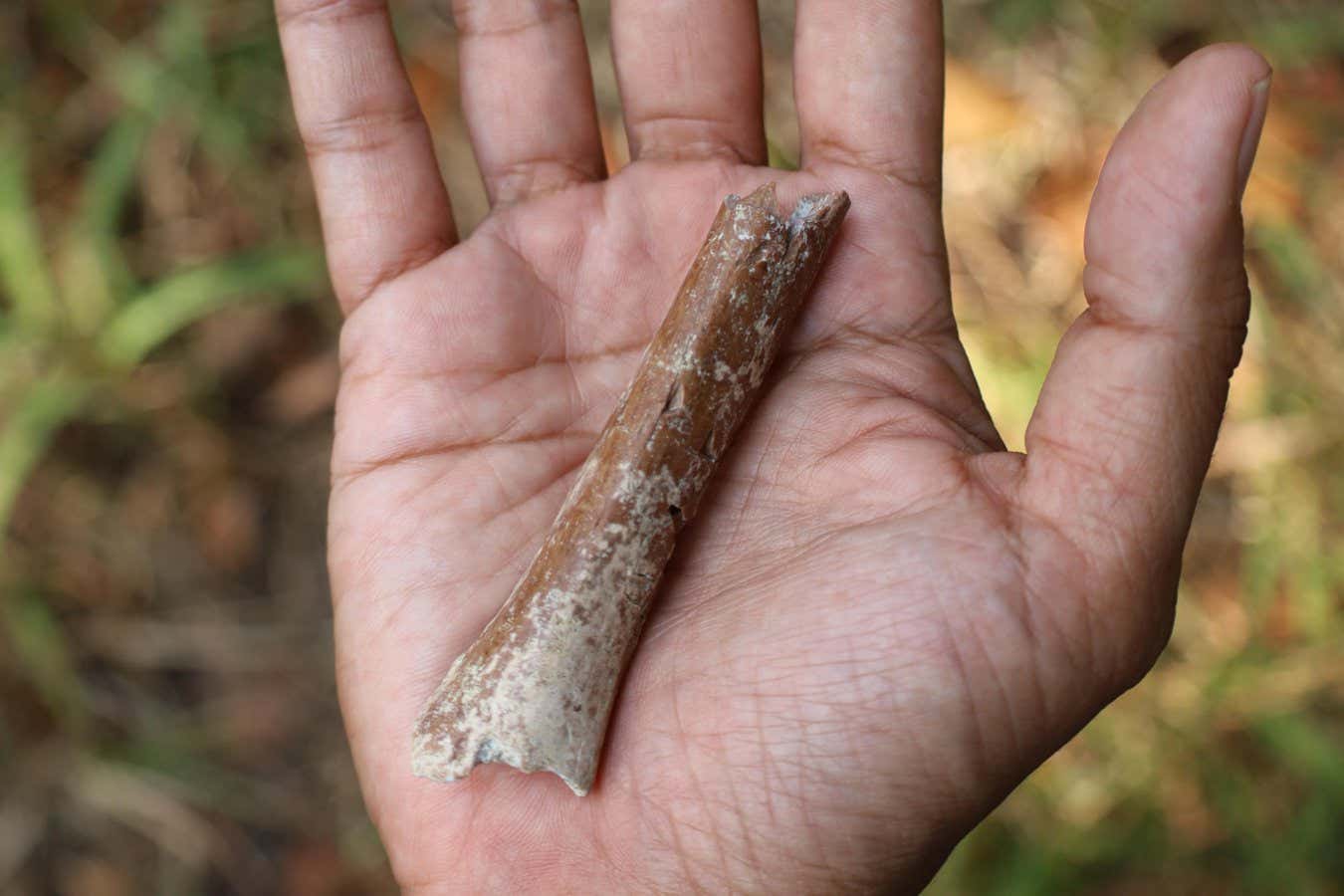An arm bone from an ancient human that lived 700,000 years ago on the island of Flores is the smallest ever found from an adult hominin, adding a new piece to the puzzle of Homo floresiensis
By Michael Marshall
6 August 2024
A humerus fragment excavated at Mata Menge in Flores, Indonesia
Yousuke Kaifu
Hominins living on an Indonesian island 700,000 years ago were even smaller than Homo floresiensis, the so-called hobbits that lived on the same island much more recently. Newly analysed fossils may represent the hobbits’ ancestors – but the evolutionary story of these small-bodied hominins is still shrouded in mystery.
Fossils of H. floresiensis were first discovered in 2003 in Liang Bua cave on the island of Flores. The hobbit bones date from between 90,000 and 50,000 years ago.
Read more
Who is Ancestor X? The biggest mystery in human evolution
Advertisement
In 2016, Yousuke Kaifu at the University of Tokyo and his colleagues uncovered hominin remains from Mata Menge, an open-air site further east on Flores that was once a riverbed. The remains are about 700,000 years old and include part of a skull, a piece of jawbone and six teeth, all unusually small for a hominin.
The obvious interpretation was that the Mata Menge hominins were the ancestors of the hobbits. But because the remains were so fragmentary, it wasn’t possible to be confident.
Kaifu and his colleagues have now described three new remains from Mata Menge: two teeth and, crucially, a piece of an upper arm bone, or humerus. With this limb bone, “we could finally determine the body size,” says Kaifu.
